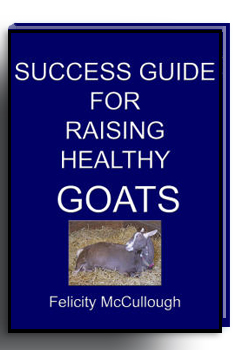Meat Goats
In many countries, more goats are kept for meat than for any other purpose, and many people prefer goat meat to any other. Since slightly more than half of all goat kids are male and only a few mature bucks are needed for breeding, most young bucks are raised for meat.
Surplus goats of any breed may be used for meat, but a breed developed specifically for meat puts on more muscle, and does so more rapidly, than other breeds. In the United States, three types of goat are kept primarily for meat.
Boer. The main meat breed today is the Boer goat. Boers originated in South Africa, where they were developed for their rapid growth, large size, high-quality meat, and uniformity of size, meat quality, and colour. The Boer has a white coat, a brown or dark red head with a white blaze, and horns that curve backward and downward. A mature doe weighs 150 to 225 pounds. A mature buck weighs 175 to 325 pounds.
Spanish. Before Boer goats became popular in the United States during the latter part of the 20th century, most meat goats were essentially those that were left to roam over brushy range or forest land in the South and Southwest to keep the land cleared of brush and undergrowth. These goats are often called Spanish goats because the first feral herds were brought to this country by Spanish explorers and sometimes left behind to furnish meat for future expeditions. Because these goats vary widely in shape and colour, the term Spanish doesn't really refer to a specific breed. Mature does weigh 80 to 100 pounds; bucks weigh 150 to 175 pounds.
San Clemente. During the 1500s, Spanish goats were left on San Clemente Island, off the California coast near San Diego. A few descendants still survive as a kind of living history, showing us what goats must have looked like 500 years ago. At one time, so many goats populated San Clemente that they nearly destroyed the island's vegetation. However, because of a successful eradication effort, the goats are now in danger of disappearing. San Clemente goats are smaller and more fine-boned than other Spanish goats, and their horns grow more upright. They come in all colours, the most common of which is tan or red with black markings. A mature doe weighs 30 to 70 pounds. A mature buck weighs 40 to 80 pounds.
Myotonic. A rare goat formerly raised for meat, but that is today more of a curiosity, is the myotonic goat. This animal is also called the Tennessee fainting goat, the Texas nervous goat, or the wooden leg goat. Myotonic goats are not a specific breed, but they share a genetic disorder called myotonia. When a goat with myotonia is frightened by a loud noise, its muscles contract and its legs go stiff. If the animal is caught off balance, it falls to the ground and can't get up again until its muscles relax. Frequent tensing and relaxing of the muscles gives myotonic goats heavy thighs, making them suitable as meat animals. Myotonia also keeps these goats from becoming aggressive, making them good pets. Because they cannot climb or jump like other goats, they are more easily confined, but they also make easy prey for dogs and coyotes.
The origin of myotonic goats has been traced back to four goats brought to Tennessee in 1880 by a man from Nova Scotia who later disappeared, leaving the goats behind. When those goats were bred, their odd genetic trait was inherited by their offspring and passed on through other generations. Myotonic goats come in a variety of colours. Mature does weigh about 75 pounds; mature bucks weigh up to 140 pounds.
 |
 |
 |
 |
 |
 |
 |
 |
 |
 |
 |
 |
 |
Goat Lap Shop Home
Photographic credits:
Meat Goats, meat, goats, goat, goat kids, male, bucks, breeding, young bucks, raised for meat, breed, muscle, breeds, Boer, meat breed, Boer goat, South Africa, high-quality meat, uniformity of size, meat quality, colour, white coat, brown, dark red head, white blaze, horns, mature, doe, buck, Spanish, brushy range, forest land, brush, undergrowth, Spanish goats, feral herds, Spanish explorers, San Clemente, Spanish goats, San Clemente Island, California coast, San Diegom, population, vegetation. Smaller, fine-boned, horns grow upright, colours, tan, red, black markings. Myotonic, rare goat, raised for meat, Tennessee fainting goat, Texas nervous goat, wooden leg goat, genetic disorder, muscles contract, muscles relax, meat animals, pets, prey for dogs, coyotes, Nova Scotia, offspring, best goats for meat, meat goats, meat goat breeds, keeping goats for meat, raising meat goat for beginners,

American Dairy Goat Association
American Goat Society
Dairy Goat Society of Australia
DEFRA UK
National Pygmy Goat Association
Pygmy Goat Club
Welfare of Goats During Transport
Updated 5 March 2022 ©
#bestgoatsformeat, #meatgoats, #meatgoatbreeds, #keepinggoatsformeat, #raisingmeatgoatsforbeginners,

